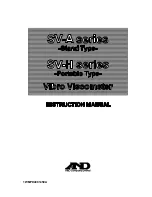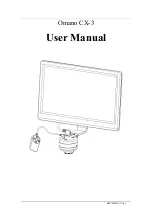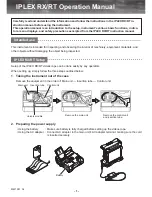
7
Non-addressable ASCII protocol
When using non-addressable ASCII protocol, the
message sent to X-2071 consists of the text to display
only, with no addresses, checksums etc.
However, there has to be a terminating character at
the end of the message so that distinct messages can
be separated from each other. Most often this delimiter
is a newline character <CR> or <CR><LF>. The ascii
value of that character is selected at the conf menu
item “Delim”. Ascii value of <CR> is 13. When Delim
is set to 13, also <CR><LF> (Ascii 13 and 10) is
interpreted as single character.
Sometimes the message contains additional
characters that are not to be displayed. If these occur
before the actual message to display, the First setting
can be set to match the number of these characters
and they are abandoned. Likewise the number of
characters to display may be limited with Count setting
to 1..12.
An example of control message:
ANS_29.4PPP<CR>
Set Delim=13 (<CR>), First=4 (ANS_ is cut off) and
Count=4 (PPP is removed).
The display will be: [29.4 ]
If there is a start character in addition to the terminating
character, the start character can be removed by
increasing the First setting by 1. The other way to
handle this is to set the Delim to match the start
character and use Count setting to indicate the end of
the message (only if the length of the message is
constant).
Display modes
X-2071 can be used to show short text messages,
but most usually it is used to display measurement
results, that is numerical values. There are two dis-
tinct display modes to choose from.
Generally, when the device that is contolling 2071
has formatted the message keeping in mind there is
a six digit display, the Text mode gives free contol
over the 2071 display. Also Text mode must be
selected in order to display non-numerical text
messages. On the other hand, when displaying
numerical results, the Numerical mode is more
flexible.
TEXT Mode
In the Text mode, X-2071 doesn’t process the mes-
sage in any way. The first received message is placed
at the leftmost position of the display and so on. How-
ever, dot (Ascii 46) and comma (44) are placed as the
decimal point of the previous character, if applicable,
thus not taking an display position of their own.
It takes never not more than 12 characters to fill up
the display. This case will occur when each letter is
succeeded with a dot: 1.2.3.4.5.6.
If more characters are sent that can fit on the display,
the trailing characters are ignored.
If the display is wanted to be aligned to the right, there
is no other way than to send a correct number of
spaces (Ascii 32) before the actual characters. The
display can be cleared with a message with only
spaces (1 or more).
X-2071 does its best to represent all Ascii characters
from 32 to 126 on its display. However, with seven
segment technology there are several compromises.
E.g. the number 5 and literal S appear equal.
NUMERICAL Mode
In the Num mode, X-2071 tries to interpret the mes-
sage as a mathematical figure and then to reconstruct
it onto the display right-aligned. This method will give
more acceptable display when the message is not
specifically targeted for a six-digit display.
Interpretation
In the message, the first numerical character (0..9 +
- .) is searched for. This on the characters are
interpreted as a part of a number until first non-
numerical character is encountered. Additionally,
there may be space characters between the sign
(-) and the number itself.
Displaying
The number is formatted on the display right-aligned
and the sign immediately next to the number. The
number of decimals will be the same as in the
incoming message, but it may be limited with Dec
setting in the menu. If the number is too big, the
decimal count is decreased automatically. When
decimal count is decreased, X-2071 will keep round-
ing the number properly.
If the number is too big to be displayed (e.g. 1 000






























